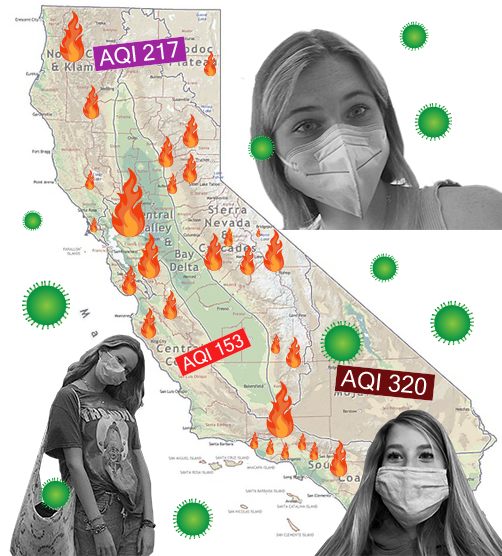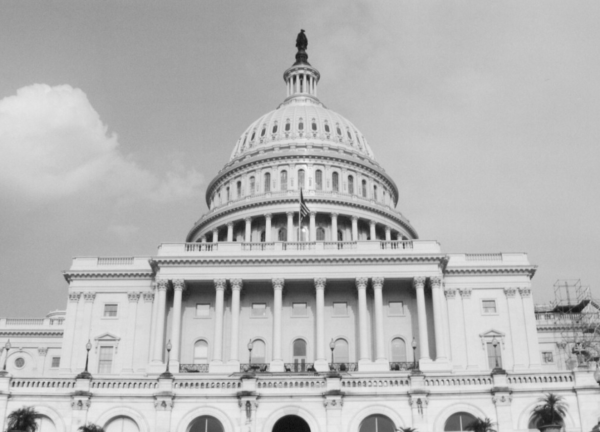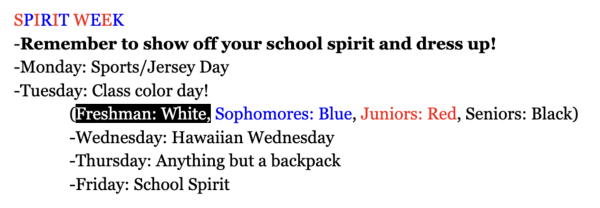Double trouble
Wildfire smoke produces additional complications to COVID-19

California residents face challenges presented by both wildfires and COVID-19.
September 24, 2020
Wildfire smoke, which can be harmful to the lungs, can also intensify a person’s reaction to COVID-19 as it irritates the lungs and damages the immune system which can make a person more susceptible to the virus according to the CDC.
With over 3 million acres of land burned across California, the air quality, from over 900 fires and a lack of wind, remained at a dangerous level in the past month. Previous COVID-19 health mandates which encouraged Bay Area residents to find refuge in outdoor activities became dangerous, leaving residents with few safe options other than staying in their own homes.
“We typically want [people] to stay indoors and keep their windows shut because that way it will keep the unhealthy air out of their homes,” CAL FIRE information officer Lynnette Round said. “If they do have to go out they can wear an N95 mask because they keep out the tiny particles.”
N95 masks filter 95% of particles 0.3 microns or larger which are found in wildfire smoke. In order to work, the masks must be fitted well to the face with one strap above and one below the ears, according to the Washington Department of Health.
“The smoke especially affects people who have asthma or any lung compromised systems,” Round said. “They have to make sure that they are checking the AQMD for the weather.”
Local Air Quality Management Districts officially record and predict the Air Quality Index for a given area on a 1-500 scale. Good quality air has an AQI below 50; Unhealthy air is above 150, and Hazardous air is above 300, according to Air Now, a federal government agency.
The largest health concern when it comes to wildfire smoke is the microparticles which can get deep into the lungs. The immune cells in the lungs, which fight off bacteria and other particles in the air, are not able to digest many of the particles in the smoke, according to the University of California San Francisco.
“I get more nauseous because the air isn’t clean,” junior Eliza Spaht, who has asthma, said, “but wearing a mask has helped me protect myself from the virus and has helped my lungs with the smoke.”
COVID-19 symptoms can also mirror the symptoms of overexposure to wildfire smoke as both can lead to coughing, sore throat and difficulty breathing. Extreme symptoms can come from prolonged exposure or outdoor exercise which is especially harmful as a person takes in about ten times more air into their lungs when they are exercising, according to the British Columbia Center for Disease Control.
Exercising indoors can help maintain a semi-normal routine and can take time away from technology and screens. Yoga can be a helpful solution to dealing with stress and anxiety and is also a healthy way to stay active inside, according to Yoga Club founder Bridget Mills said.
“When you are sitting on a screen for hours at a time, yoga can be a good de-stressor and break in the middle of the day,” Mills said. “Practicing yoga can help you center yourself and it can make you focus on the positions rather than the stresses of school or staying inside.”
Coronavirus and the threat of wildfires will continue to inhibit California in the coming months, despite lower rates of COVID-19 cases in the Bay Area and the general containment of the August fires.
“Fires typically in the last 10 years have been a lot warmer, our fire season has extended about 75 days because of the warmer temperatures,” Round said. “The land is dry, the weather is hot, and the low humidity just makes it ripe for wildfires.”









